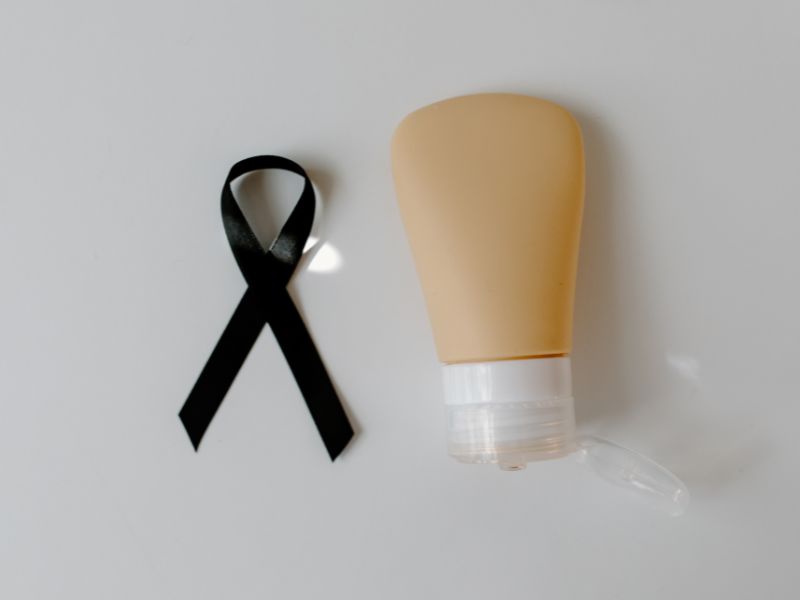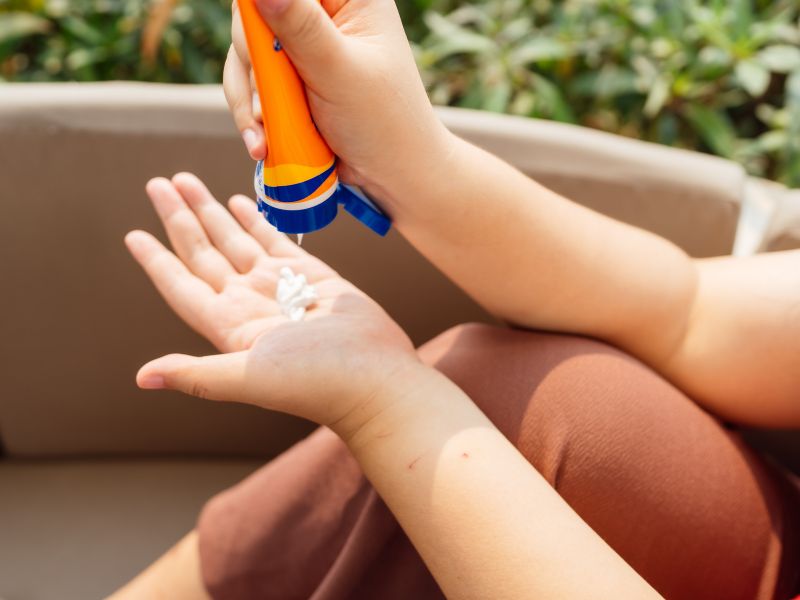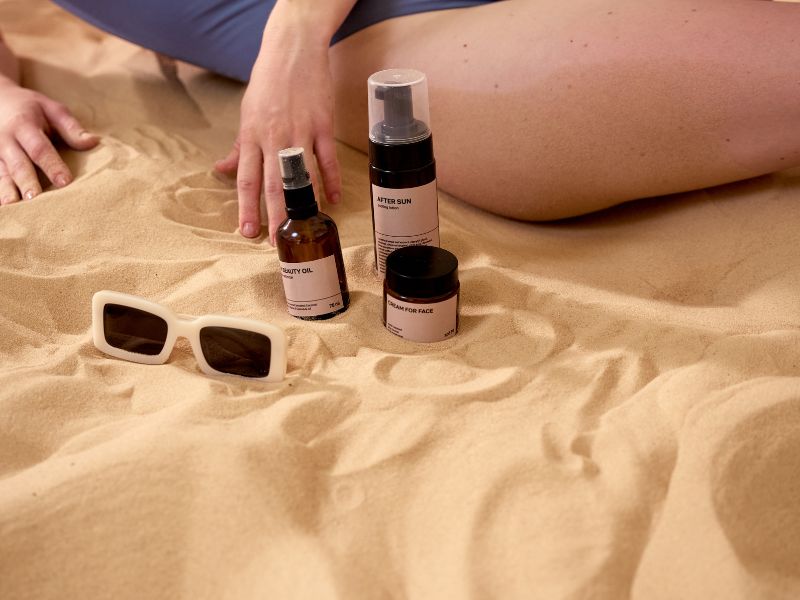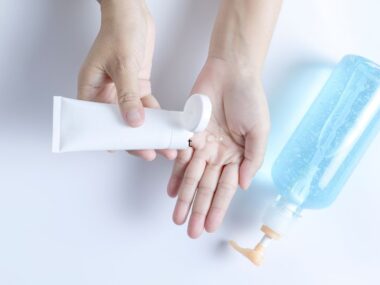When it comes to skincare and sun exposure, a commonly debated question is whether sunscreen can remove a tan. With the rising emphasis on skincare and sun protection, many people seek answers to understand the role of sunscreen in tan removal and its overall impact on skin health. This article will delve into the mechanics of sunscreen, the tanning process, how sunscreen affects tans, and alternative ways to prevent and remove tanning while prioritizing skin health.
Table of Contents
ToggleUnderstanding Tanning and How It Affects the Skin
What is Tanning?
Tanning is the process by which the skin darkens after exposure to ultraviolet (UV) radiation from the sun or tanning beds. When the skin is exposed to UV rays, it produces more melanin, a pigment that helps protect deeper layers of the skin from radiation damage. This increase in melanin production gives the skin a darker appearance, commonly known as a tan.
The tan may vary in appearance depending on several factors, such as:
- Skin Type: Some people tan easily, while others burn. The Fitzpatrick skin type classification helps explain why different skin types react differently to UV exposure.
- Intensity of Sun Exposure: Longer and more intense sun exposure can lead to darker tans or even sunburn.
- Genetic Factors: Genetics play a role in how much melanin your skin produces and how easily it tans.
Why Does the Skin Tan?
Tanning is a natural defense mechanism of the skin. When exposed to UV radiation, melanocytes (the skin cells that produce melanin) ramp up melanin production to absorb and disperse UV rays, helping to protect DNA in skin cells from radiation damage. However, even with a tan, the skin is not immune to sun damage, which includes premature aging, hyperpigmentation, and a heightened risk of skin cancer.
The Role of Sunscreen in Tanning
How Does Sunscreen Work?
Sunscreen is a protective skincare product that absorbs or reflects UV radiation from the sun, acting as a barrier that prevents UV rays from penetrating the skin. Sunscreens are typically classified into two main types:
- Physical (Mineral) Sunscreens: Contain ingredients like zinc oxide and titanium dioxide that reflect UV rays away from the skin. These sunscreens sit on the skin’s surface and are effective at blocking both UVA and UVB rays.
- Chemical Sunscreens: Contain organic compounds that absorb UV radiation and convert it into heat, which is then released from the skin. Common ingredients in chemical sunscreens include oxybenzone, avobenzone, and octinoxate.
SPF and Broad-Spectrum Protection
The Sun Protection Factor (SPF) indicates the level of protection sunscreen provides against UVB rays, which are primarily responsible for causing sunburn. Higher SPF values provide greater protection. However, for full protection, a sunscreen should be labeled “broad-spectrum,” meaning it guards against both UVA and UVB rays. While UVB rays are more intense, UVA rays penetrate deeper into the skin and are more responsible for aging and tanning.
Will Sunscreen Prevent a Tan?
While sunscreen reduces the likelihood of tanning, it does not entirely prevent it. Even high-SPF sunscreen allows a minimal amount of UV radiation to reach the skin, which can still stimulate melanin production to some degree. Consequently, using sunscreen may slow down the tanning process or result in a lighter tan, but it is unlikely to fully prevent it, especially with prolonged sun exposure.
Will Sunscreen Remove Tan?
Sunscreen’s Role in Tan Removal
Sunscreen does not remove an existing tan. It works primarily as a preventative measure, shielding the skin from further UV exposure. Since tanning is the result of increased melanin production, once the tan is in place, sunscreen alone cannot reverse or lighten it. However, consistently using sunscreen can help prevent further tanning and prevent the existing tan from deepening.
How Does the Tan Fade Naturally?
A tan naturally fades as the skin sheds dead cells and produces new cells over time. This process, known as cell turnover, typically occurs over a few weeks, depending on individual skin types and factors like age and overall skin health. While sunscreen does not directly remove a tan, it protects the skin during this fading process, helping to prevent additional darkening or sun damage.
How to Prevent Tanning
If you want to prevent tanning altogether, here are some additional methods to consider:
- Wear Protective Clothing: Wide-brimmed hats, sunglasses, and UV-protective clothing act as physical barriers to the sun’s rays, reducing the amount of UV exposure to your skin.
- Seek Shade: Avoiding direct sun exposure during peak hours (10 AM to 4 PM) significantly reduces the risk of tanning.
- Use High-SPF, Broad-Spectrum Sunscreen: A sunscreen with a high SPF and broad-spectrum protection is ideal for both preventing sunburn and minimizing tanning.
- Reapply Sunscreen Frequently: Applying sunscreen every two hours, or more frequently if swimming or sweating, ensures consistent protection throughout the day.
Alternative Methods for Tan Removal
If you are looking to remove an existing tan, various skincare practices and treatments can help:
Exfoliation
Regular exfoliation helps remove the top layer of dead skin cells that carry the tan. Chemical exfoliants like AHAs (alpha hydroxy acids) or BHAs (beta hydroxy acids) can work gently to encourage cell turnover. Physical exfoliants, such as scrubs, can also be used, but they should be chosen carefully to avoid skin irritation, especially on sensitive skin.
Vitamin C and Brightening Serums
Topical antioxidants like Vitamin C can help brighten the skin and lighten hyperpigmentation. Vitamin C serums boost collagen production, reduce the appearance of dark spots, and gradually lighten tanned skin. Other ingredients like niacinamide and liquorice extract also have skin-brightening effects.
Chemical Peels
Chemical peels involve applying a solution containing exfoliating agents to the skin, which encourages the shedding of the top layer of skin cells. This treatment can help lighten the appearance of a tan, but it should be done professionally to ensure safety and effectiveness.
Natural Remedies for Tan Removal
Some natural ingredients can help in tan removal. While they may not be as quick as other treatments, they are often gentler on the skin. Here are a few examples:
- Aloe Vera: Known for its soothing and moisturizing properties, aloe vera can help in healing sun-damaged skin and fading a tan over time.
- Tomato and Lemon Juice: Both are known for their skin-brightening properties. However, caution is advised when using lemon juice, as it can make the skin more photosensitive if not washed off properly.
- Yogurt and Turmeric: This traditional remedy in skincare is popular for its cooling effect on the skin and its ability to lighten pigmentation.
Laser Treatments
For stubborn tans or pigmentation, dermatological treatments like laser therapy can be effective. Laser treatments target melanin in the skin, breaking it down to promote an even skin tone. These treatments, however, are generally more expensive and require consultation with a dermatologist to ensure suitability and minimize side effects.
Common Myths About Sunscreen and Tanning
Sunscreen Completely Prevents Tanning
As discussed, sunscreen does not block 100% of UV rays, so some level of tanning can still occur. However, sunscreen significantly reduces the rate and depth of tanning by filtering out a majority of harmful UV radiation.
Higher SPF Sunscreens Prevent All Sun Damage
A higher SPF provides more protection, but it does not make you immune to sun damage. Both UVA and UVB rays can still penetrate the skin, especially if sunscreen is not applied correctly or frequently enough. SPF 30 blocks around 97% of UVB rays, while SPF 50 blocks about 98%, so the difference is not as drastic as many think.
Sunscreen is Only for the Beach
Daily sunscreen application is crucial, even on cloudy days, as UV rays can penetrate through clouds and windows. Consistent sunscreen use protects the skin from cumulative sun damage, even during everyday activities.
Sunscreen is Only Necessary for Certain Skin Tones
Regardless of skin tone, sunscreen is essential for everyone. While darker skin tones have more melanin, which provides some natural protection, they are not immune to sun damage, pigmentation issues, or skin cancer risks. Sunscreen helps protect all skin types equally.
Choosing the Right Sunscreen
When choosing a sunscreen, consider these factors:
- Broad-Spectrum Protection: Ensures protection against both UVA and UVB rays.
- SPF Level: SPF 30 or higher is generally recommended.
- Water Resistance: For prolonged outdoor activities or swimming, a water-resistant formula is essential.
- Skin Type: Those with sensitive or acne-prone skin may benefit from mineral sunscreens, which tend to be gentler. For oily skin, non-comedogenic and oil-free options are ideal.
Conclusion
In summary, sunscreen is essential for protecting the skin from harmful UV rays, reducing the risk of sunburn, premature aging, and skin cancer. However, while it can slow down or minimize tanning, it does not remove an existing tan. Tanning is a natural response of the skin to UV exposure, driven by increased melanin production, and once a tan has developed, only time and skin cell turnover can fade it. Consistently using sunscreen prevents further darkening and helps maintain a more even skin tone.
For those looking to remove a tan, practices such as exfoliation, using brightening products, and seeking dermatological treatments are effective options. Alongside these methods, using sunscreen every day forms the foundation of good skin health, providing necessary protection and preventing additional pigmentation or damage. Ultimately, a balanced skincare approach that combines sun protection with targeted treatments will ensure your skin remains healthy, vibrant, and resilient.






